This Could Be A Game Changer For America’s Forgotten Paradise
RINCÓN, Puerto Rico — At the end of a dirt road leading to a prime surfing spot in this vacation town on the northwest coast sits a giant, hemispheric bulb bulging out from between the palm trees. When the structure popped up more than six decades ago, federal scientists called it the “dome of the future.”
Advertisement
Beneath its rounded concrete exterior lie the remains of the only nuclear power reactor ever built in the Caribbean — an early experimental model the U.S. government started testing in 1960 to see if superheating steam to higher temperatures could unlock ways to make atomic energy cheaper.
Due to technical challenges and high maintenance costs, Puerto Rico’s state-owned utility ended operations at the nuclear plant in 1968. The site eventually became a museum open to the public — until Hurricane María, the Category 5 storm that pulverized the island in 2017. Today it’s locked behind a guarded chain-link fence, an artifact of a bygone era when the United States’ most populous unincorporated territory was at the vanguard of Space Age technological discoveries.
For Angel Manuel Ciordia, however, the remnants of the nuclear reactor offer hope — hope for a modern Puerto Rico whose residents can finally emerge from the hardships of a life without steady access to electricity, and hope that he won’t have to fear every day that the machines keeping him alive will stop working.
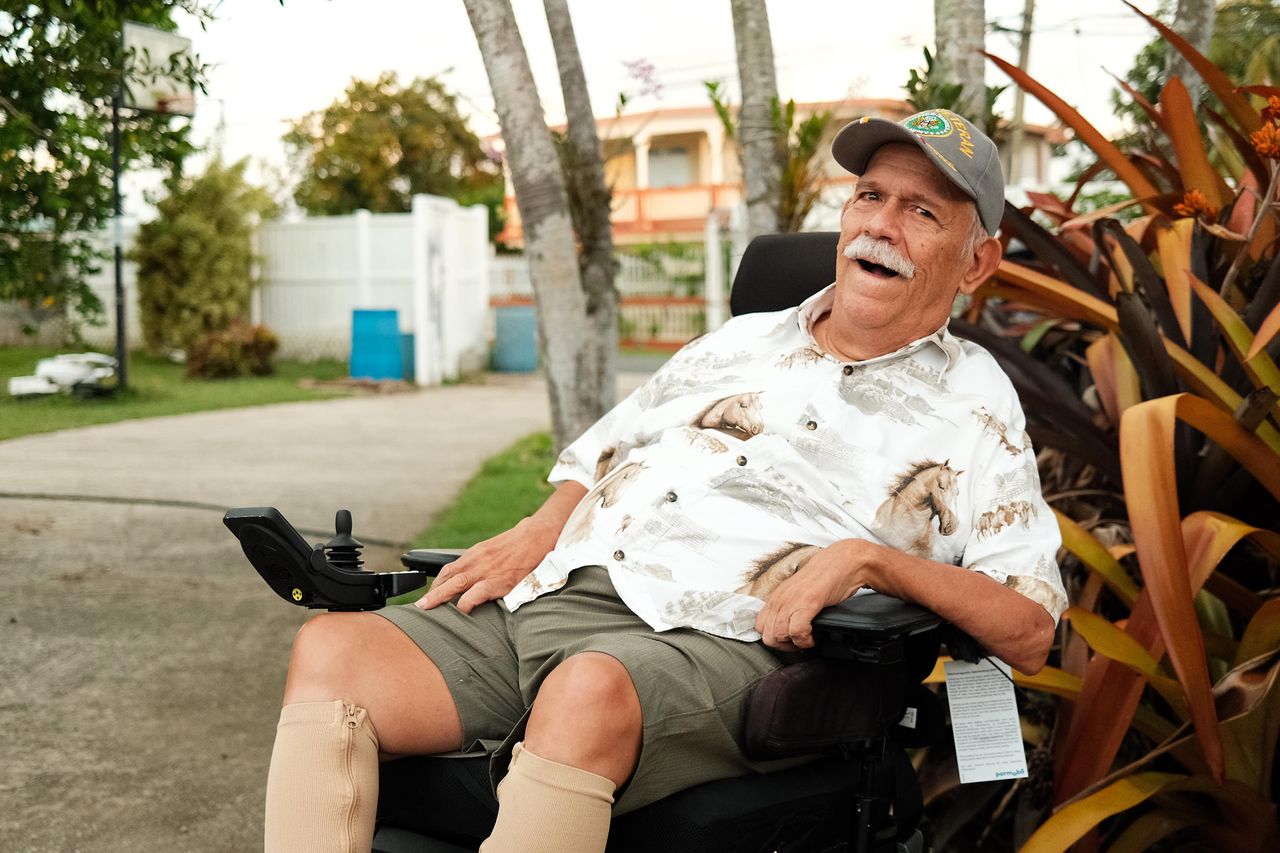
Alexander Kaufman/HuffPost
Advertisement
A former radio executive, Ciordia, 75, lived most of his life in his hometown some 70 miles east of Rincón in the beachside enclave of Vega Baja. Nowadays he rarely leaves the single-story house with a tidy garden he shares with his wife, Maritza. After years of worsening effects from cerebral palsy, he depends on an electric wheelchair to get around, an electric bed to prop himself up and an electric breathing machine to keep his lungs full.
Seven years after the Category 5 storm laid waste to the island’s infrastructure, Ciordia loses power at least three times a week, with the longest outages lasting a full day.
He survives, he said, thanks to the equipment he’s spent $33,000 on over the past few years: He installed solar panels on his roof and a battery to store extra electricity for when the sun goes down. He also bought a generator and pays for regular deliveries of diesel to keep the motor humming when power stops flowing from Puerto Rico’s grid.
But that is no way for an island of more than 3 million people to live.
“It’s immoral,” he said, speaking outside his home late one afternoon in July. “It’s a fiasco.”
The imported fossil fuels Puerto Rico burns to produce most of its electricity are dirty and expensive. Solar panels and wind turbines can only do so much in a place with limited land, and the lithium batteries on the market today can’t store power from those weather-dependent renewables for more than a couple of days. The Caribbean archipelago is physically isolated, with no high-voltage lines connecting its grid to neighboring systems.

Alexander Kaufman/HuffPost
Advertisement
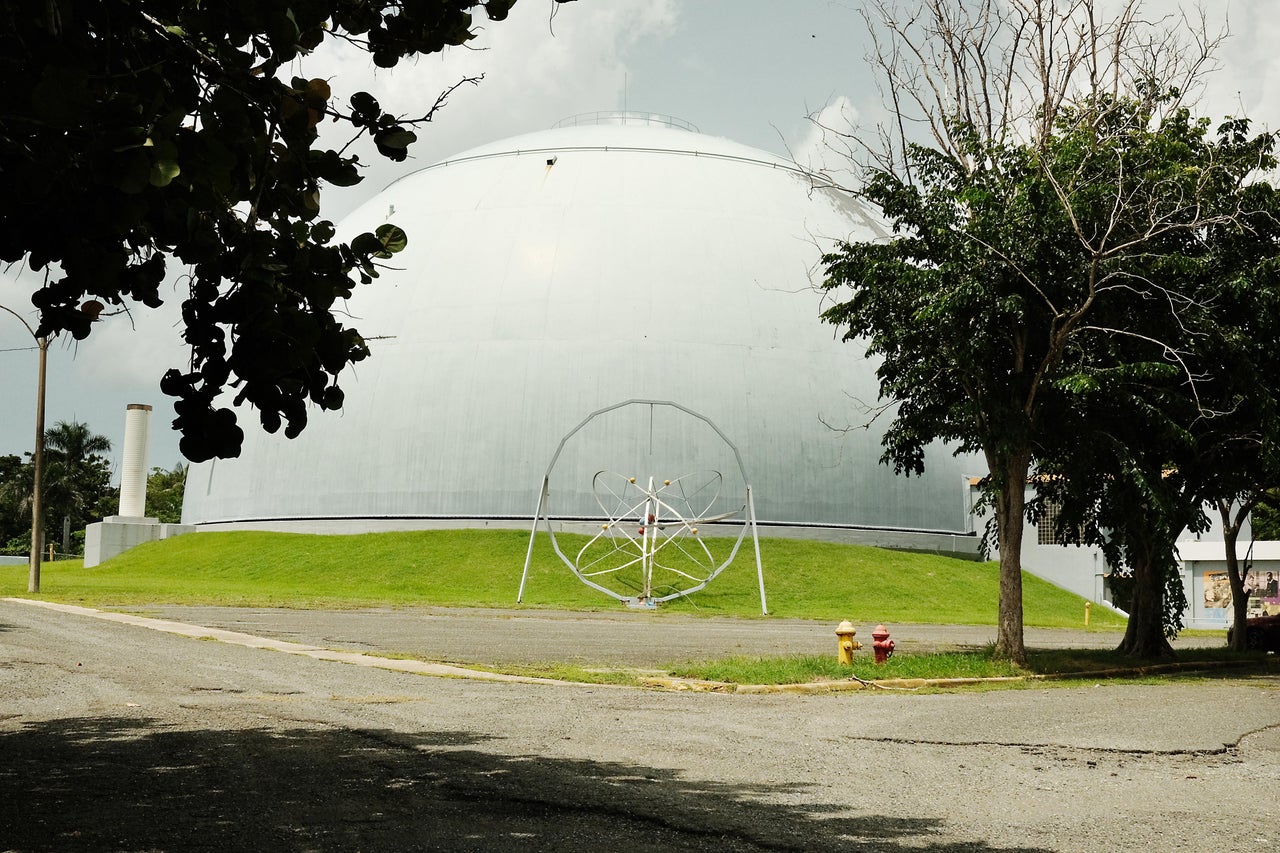
Alexander Kaufman/HuffPost
It may be time, Ciordia said, to reconsider one of Puerto Rico’s most universal political taboos: nuclear energy.
An engineer in the family had turned Ciordia onto the potential of atomic power, he said, and made him think the benefits might just outweigh the extremely small risk of an accident.
“Nuclear is clean, cheap and doesn’t carry the dangers it carried 25 years ago,” he said.
For now, a buildout of any nuclear reactors remains a far-flung possibility. Puerto Rico would need to change its landmark decarbonization law to allow reactors to qualify as clean energy. The island’s government — including the state utility that owns most of the power plants — is in too much debt to finance a project that would almost certainly cost billions of dollars. But advocates who see nuclear power as a way to restore the economic promise of mid-century Puerto Rico say it could become a real option for the island, as novel reactor designs hit the market in the next decade.
That means now is the time to start preparing.
An Uphill Battle
Few Puerto Ricans even know that Rincón’s strange dome once contained a nuclear reactor, nearly 60 years after its closure. But it’s easy to find people who say atomic energy should stay far away from their island.
Advertisement
Ask a marine biologist-turned-nun who crusades against dangerous fossil fuel infrastructure in the capital city, San Juan, what she thinks of nuclear power? She winces and shakes her head.
Describe the basic benefits of atomic energy to a farmer growing organic produce in the northern foothills? He looks at you with suspicion and asks if you’re on the industry’s payroll.
Tell a local wrestler that the odd structure by one of his favorite beaches was once the Caribbean’s only nuclear reactor? He raises his eyebrows to express grave concern.
Recent Puerto Rican history offers examples of why a reasonable person may doubt that deploying a technology as sensitive as a modern nuclear reactor on their island could ever be safe.
For much of the 20th century, the U.S. military used the Puerto Rican island of Vieques for target practice, leaving behind spent munitions containing toxic metals that researchers link to the much higher rate of cancer among the roughly 8,000 Puerto Ricans living there.
Advertisement
Puerto Rico’s largest power station, a coal-fired plant on the main island’s southeast coast, stacked a mountain of ash several stories high without the proper covering, allowing it to spread into waterways and blow into the air. The surrounding municipality now suffers from one of the highest cancer rates in the entire U.S. Even now, the territory’s largest solar and battery plants are springing up next to those same neighborhoods, causing flooding and eliminating vast areas of prime agricultural land.
Then, of course, there was 2017’s Hurricane María, followed by a series of earthquakes in 2019 and 2020. Years later, the island is still plagued with prolonged, often daily blackouts ― deadly hazards for Puerto Ricans who depend on electric breathing machines or refrigerated medicine ― and power surges that routinely fry appliances.
Puerto Rican skeptics of nuclear power may have particular reasons, but their hang-ups are hardly unique. Decades before physicist Enrico Fermi split the first atom in 1934, science fiction writers and cartoonists captivated the American public with tales of civilizational oblivion brought on by scientific ambition giving way to bravado, as the book “The Rise of Nuclear Fear” by historian Spencer Weart.
“Atomic energy was especially apt for evoking anxiety about science; had not scientists themselves proclaimed it the most mysterious and potent of powers?” Weart wrote. “Thus atomic energy became particularly closely associated with all the uneasiness that people felt over matters of science and technology.”
That the awesome power of atomic fission first went on display worldwide in the form of mushroom cloud explosions did little to reassure an anxious public. Nuclear-powered naval submarines, after all, predated the first civilian nuclear power plant.
Advertisement
In 1979, the Hollywood blockbuster “The China Syndrome” premiered, starring Jane Fonda as a reporter who discovers a nuclear plant owner’s attempt to cover up a dangerous accident. Days later, one of the two reactors at the Three Mile Island nuclear plant in Pennsylvania partially melted down, releasing radiation into the surrounding area. No one died, and repeated studies have failed to turn up evidence of any uptick in diseases from the radiation exposure. New U.S. regulations and practices put in place after the accident actually improved the functioning of the American nuclear fleet so dramatically, reactors went from producing power only 60% of the time to upward of 95%, halting generation only rarely for inspections and refueling.
The Chernobyl disaster followed in 1986 in Soviet Ukraine. To supporters of atomic energy, it demonstrated the dangers of an authoritarian system that discouraged whistleblowing and of the plant’s nonstandard design. But the only major civilian nuclear meltdown in nearly a century with an actual death toll cemented the public’s image of atomic power as fundamentally unsafe.
When a tsunami struck four nuclear power plants in northeastern Japan on March 11, 2011, just one — the Fukushima-Daiichi station — suffered a meltdown and radiation release when the backup generators meant to keep the reactors cool in an emergency flooded. The other stations were located on higher ground or were hidden behind steeper sea walls. But the older Fukushima plant had been built to outdated tsunami safety standards that fell short of the United Nations’ recommendations, and Japanese regulators never required any update.
Estimates vary as to the number of people who died due to stress or other complications from the resulting evacuation. No one is confirmed to have died of acute radiation exposure in the wake of the meltdown, though the Japanese government paid out compensation to one emergency worker who died form a likely unrelated case of lung cancer.
Even now, animals living in the exclusion zone around the defunct plant are showing few signs of the diseases scientists would normally expect to see if they’d been seriously irradiated, according to recent studies. That could suggest that regulations to guard against radiation exposure may be stricter than needed to protect human health.
Advertisement
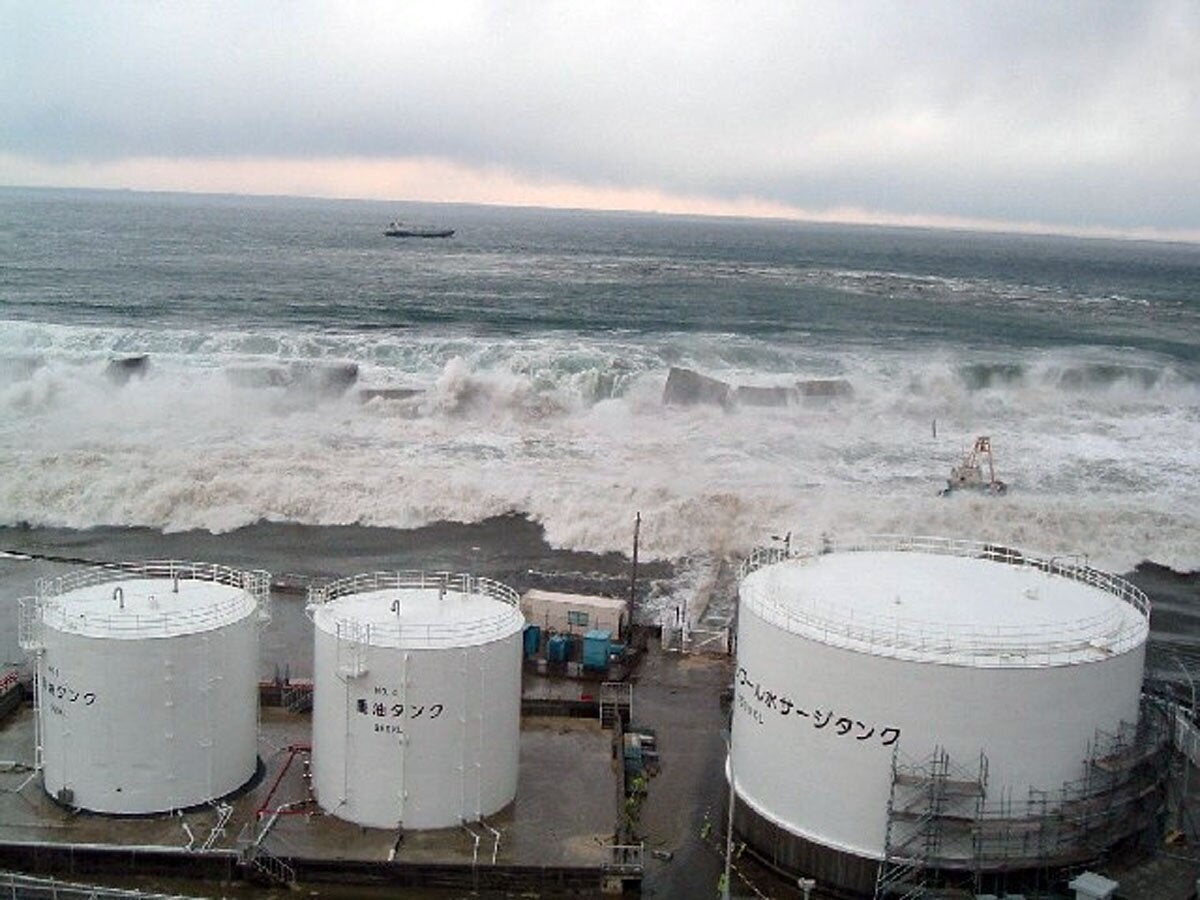
Kurita KAKU via Getty Images
Public support for nuclear power has shifted over the past two years, as the need for steadier and more abundant electricity than renewables alone can generate has grown clearer and the wars in Ukraine and the Middle East have driven up fossil fuel prices. A majority of American adults favor expanding nuclear power in the U.S., with 56% supporting construction of new reactors in a Pew poll from August. And though a 2023 Gallup poll found Republicans were the most enthusiastic backers of nuclear energy, a growing number of Democrats have also come around to it.
There is scant public polling of Puerto Ricans’ feelings about a source of power that hasn’t been on the table for half a century or how it might compare to alternatives ― even now, when most people simply want to prioritize whatever will keep the lights on. It took 11 months for some parts of the island to regain power after Hurricane María, marking, as of 2018, the second-longest blackout anywhere in world history. Before adequate service was restored in 2019, the territory’s fiscal control board handed the broken electrical system off to profiteers from the U.S. and Canada who kept hiking prices, even though Puerto Ricans already paid some of the highest rates in the nation.
Still, even among some Puerto Ricans convinced of nuclear power’s safety and benefits, there are concerns about the cost. The only two reactors built from scratch in the U.S. in decades cost ratepayers in Georgia roughly $14 per month; state regulators allowed the utility company that built them to pass on billions in budget overruns and construction costs to its customers. Already billions of dollars in debt to bondholders, Puerto Rico’s state power company — which still owns most of the island’s generating stations, though a private company now operates them — can ill afford such an investment.
When Jorge Navarro Suárez, a lawmaker in Puerto Rico’s House of Representatives, held a hearing in 2019 to examine the potential for nuclear power on the island, the event drew criticism for excluding environmentalists from the expert witness panel.
Advertisement
So it was no surprise when in 2020, ahead of that year’s gubernatorial election, nearly every candidate came out against nuclear energy during in a televised election debate hosted by a local green group.
The only person to potentially entertain the idea — Javier Jiménez, the current mayor of the town of San Sebastian and a candidate running for governor this year — said he would have to study whether nuclear reactors could work anywhere in Puerto Rico. So far, the topic has received little attention in the 2024 election.
But a young engineer who left his native Puerto Rico to work on nuclear plants in the mainland U.S. is hoping to revive political discussions about the issue.
An Atomic Dream
Jesús Nuñez grew up in the small mountain town of Cidra, a public-school kid raised by a single mother after his father died in a work accident. After high school, he got into the University of Puerto Rico’s prestigious civil engineering program at the campus in Mayaguëz, earning both a bachelor’s and a master’s degree. By the time he graduated, the 2008 global recession had hit and the economy was tanking. Nuñez had never planned to leave Puerto Rico, but an academic adviser told him the engineering giant Bechtel was hiring for an entry-level position in its Frederick, Maryland, headquarters.
The company ended up assigning him to work on nuclear reactors across the American South. It was his first introduction to atomic energy. He remembered feeling scared of radiation exposure but was assured by a colleague he’d be fine.
Advertisement
“I grew up with ‘The Simpsons.’ I grew up with the images from TV that these things might explode. That was my original education in nuclear,” Nuñez said. “But after I started educating myself about it at work, I gained respect for radiation.”
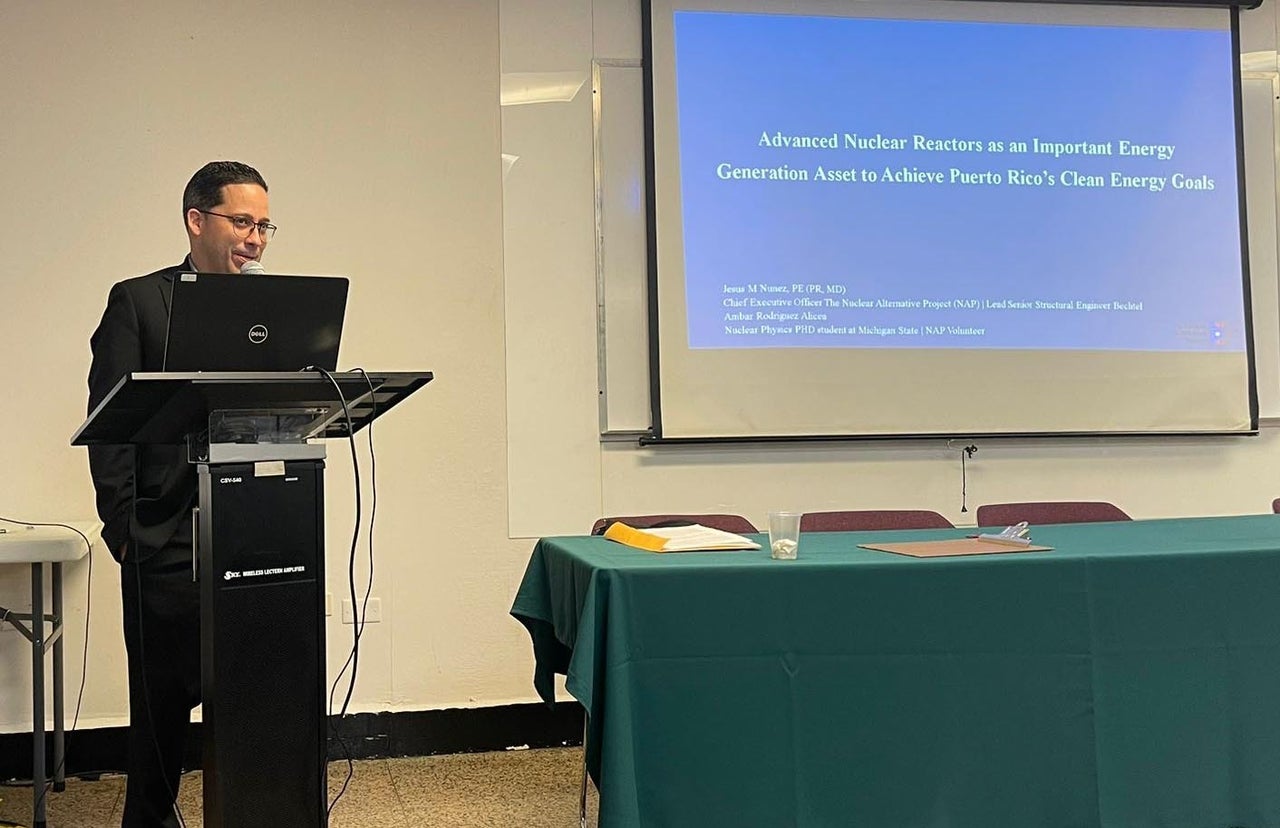
Courtesy Jesús Nuñez
Nuñez found himself evangelizing the benefits of nuclear power to family and friends. It was difficult to imagine building a new large-scale reactor in Puerto Rico, but companies were increasingly proposing smaller units he felt could serve as a replacement for its expensive diesel-fired power plants.
In 2015, he launched the Nuclear Alternative Project, a nonprofit aimed at educating the public about the potential for atomic energy in Puerto Rico. The group — which Nuñez runs voluntarily in his free time, along with a handful of other Puerto Rican nuclear engineers and enthusiasts — got its big break in 2019, when it won a federal grant from the U.S. Department of Energy to conduct a study into the possibility of building a small modular reactor on the island.
The report, published in May 2020, concluded that even these small reactors could replace as much as 74% of Puerto Rico’s existing power plants, and pointed to the continued operation of nuclear plants through hurricanes on the Texas and Florida coasts as evidence they’d be safe. But the fact that Puerto Rico’s bankrupt state utility owes billions of dollars in debt to creditors means the island could not finance a reactor via the usual means, the report concluded, and it would need either federal funding or a deep-pocketed industrial investor.
Advertisement
Nuñez planned to conduct a second study into the economic benefits of nuclear power for Puerto Rico, but in 2021, the Energy Department halted funding on the Nuclear Alternative Project’s grant.
The agency stopped the grant payments because a law the territory passed in 2019 mandating 100% renewable energy by 2050 did not include nuclear reactors as a source of clean power, said Marisol Bonnet, Energy Secretary Jennifer Granholm’s senior adviser on Puerto Rico issues.
“We felt it would not be responsible for the DOE to continue evaluating things that are outside the law in Puerto Rico,” Bonnet said by phone.
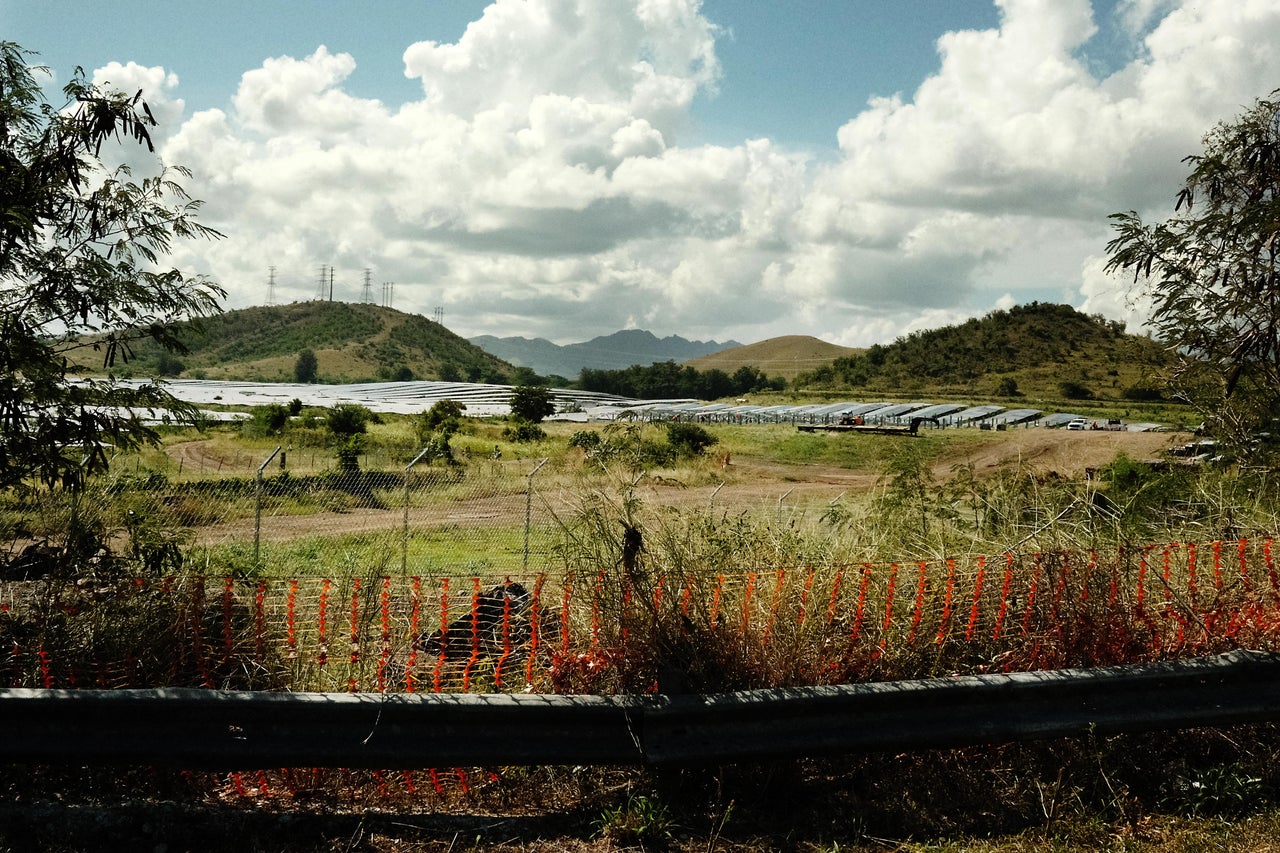
Alexander Kaufman/HuffPost
When the DOE conducted its own study on how Puerto Rico can meet its 2050 target, the agency concluded that large-scale solar farms were the only major source of clean energy cheap enough for the bankrupt territory to afford in bulk. Even offshore wind turbines were too expensive. But to meet its goals, it would need to blanket vast areas of farmland and virtually every available rooftop in panels, and even then, it would still need fuels like biodiesel or wood to make up the difference.
Advertisement
And all of that assumes that electricity demand in Puerto Rico remains relatively flat — unlikely, given the boom in internet data centers and electric vehicles underway elsewhere in the U.S. The study did not consider nuclear reactors.
That buildout of large-scale solar farms is now underway. But local critics say the projects, spanning hundreds of acres, are destroying Puerto Rico’s hydrological systems and eating up vital land that could be used to farm more food locally in a territory that depends on imports for nearly 90% of its calories.
In the meantime, the island is reliant on fossil fuels. The natural gas company Puerto Rico put in charge of running its power plants has been building out more units. The main natural gas import terminal in San Juan was built without any public hearings or federally-approved emergency plans.
That wouldn’t happen with a reactor, the U.S. Nuclear Regulatory Commission said.
“Public engagement for us is paramount, everything we do has to be in an open and transparent way,” said Mohamed Shams, a director at the federal atomic agency. “We recognize it’s a nuclear plant. It’s not a grocery store or a Wal-Mart. The public has to see what we’re doing.”
Nuñez predicts attitudes in Puerto Rico will change over the next decade, when younger generations — who support nuclear power more than their parents, polls show — gain more political influence.
Advertisement
Another factor, he expects, will be the successful deployment of small modular reactors elsewhere in the U.S. The nuclear projects underway in Wyoming, Tennessee and now potentially Utah could make a similar project in Puerto Rico look less risky. And the landmark investments tech giants such as Amazon and Alphabet-owned Google are making into nuclear startups could also help make next-generation reactors cheaper and more widely available.
But Puerto Rico’s perennial political fault line — whether the island should remain a territory, seek U.S. statehood or declare independence — will continue to complicate its energy supply, he said. Those who want independence for a territory often described as “the world’s oldest colony” would never trust the United States government to build and run a nuclear plant. But Nuñez said no one trusts the local government to do that, either.
To Ciordia, however, the deteriorating quality of life in Puerto Rico means it’s time to try something different — and not even that radical, given the history of nuclear power in Rincón.
“We are not supposed to live like some Third World village,” he said. “A nation without electricity cannot survive.”
Hermes Ayala Guzmán contributed reporting.

